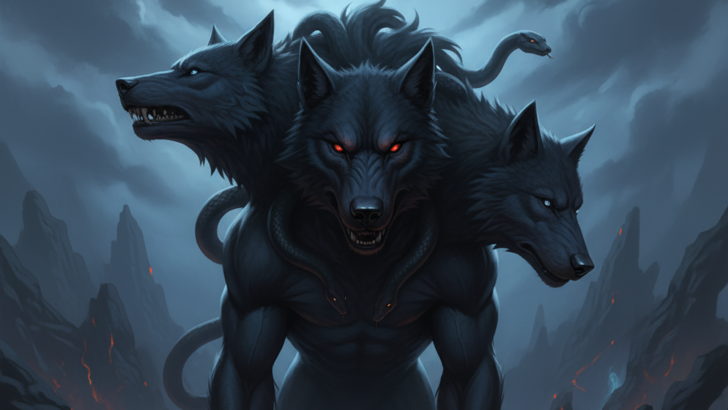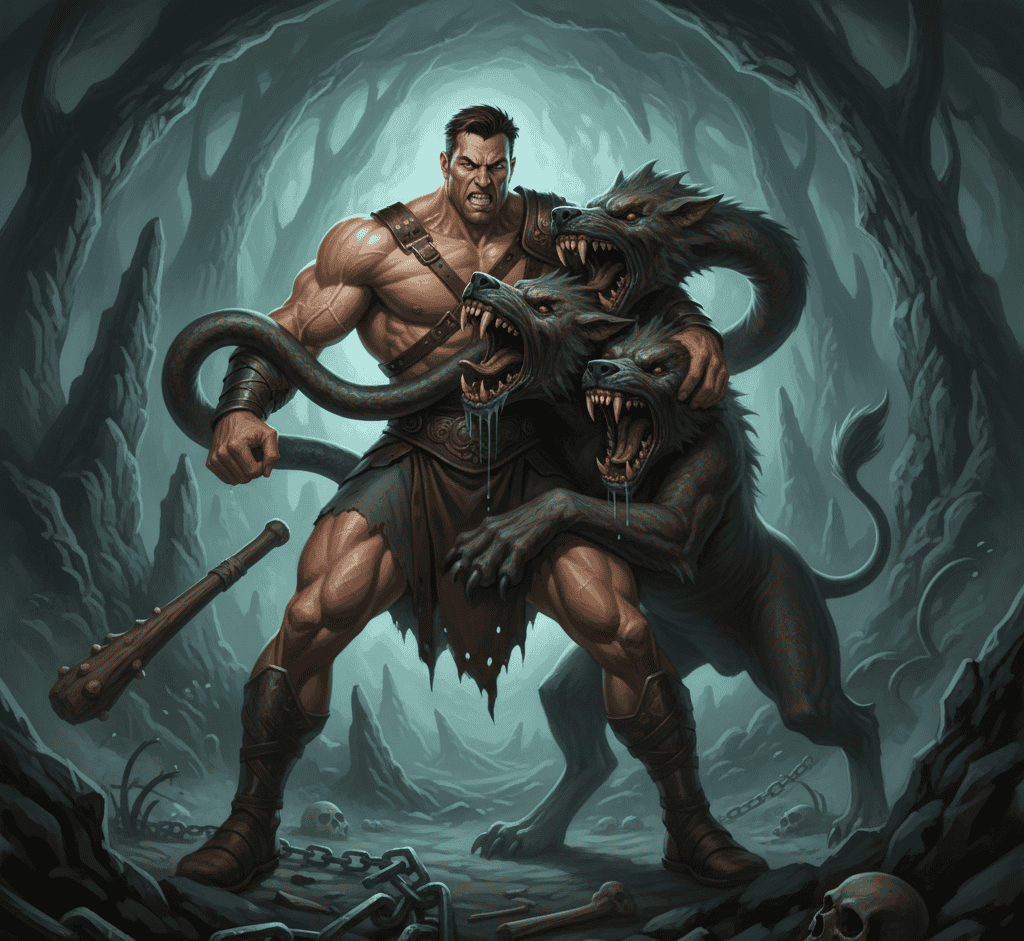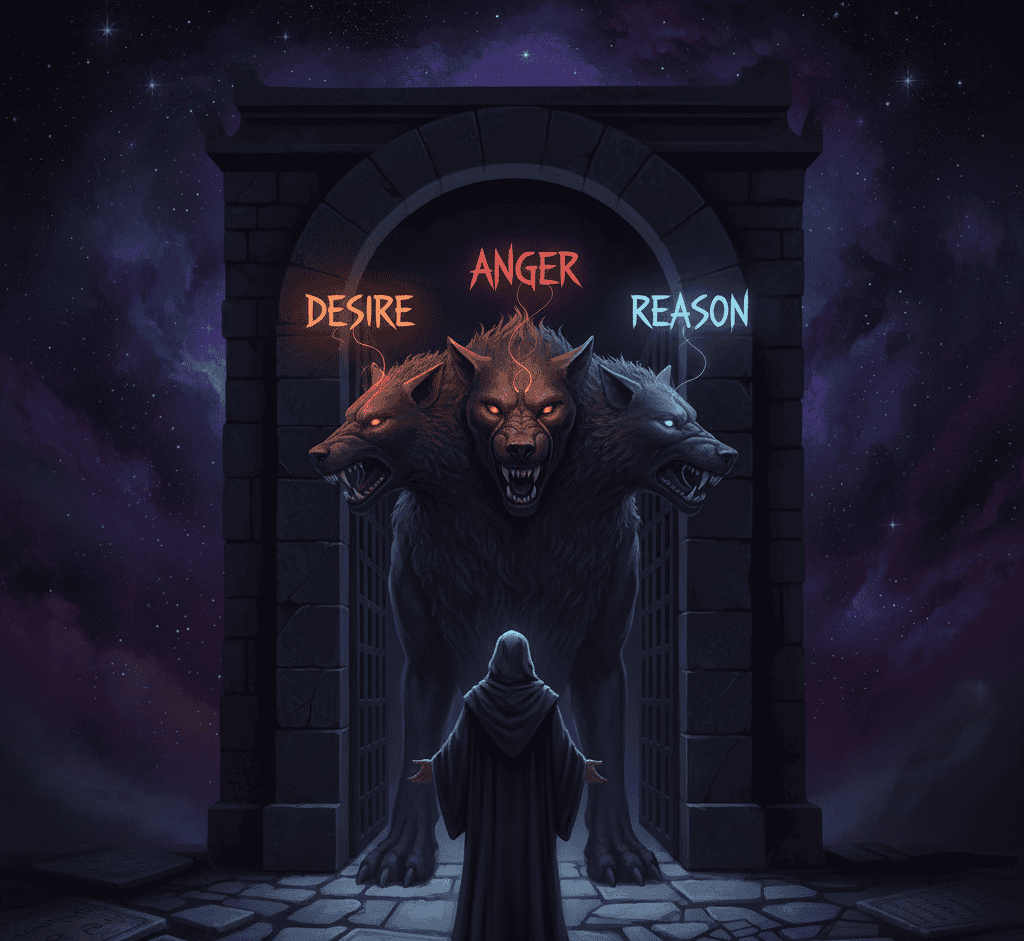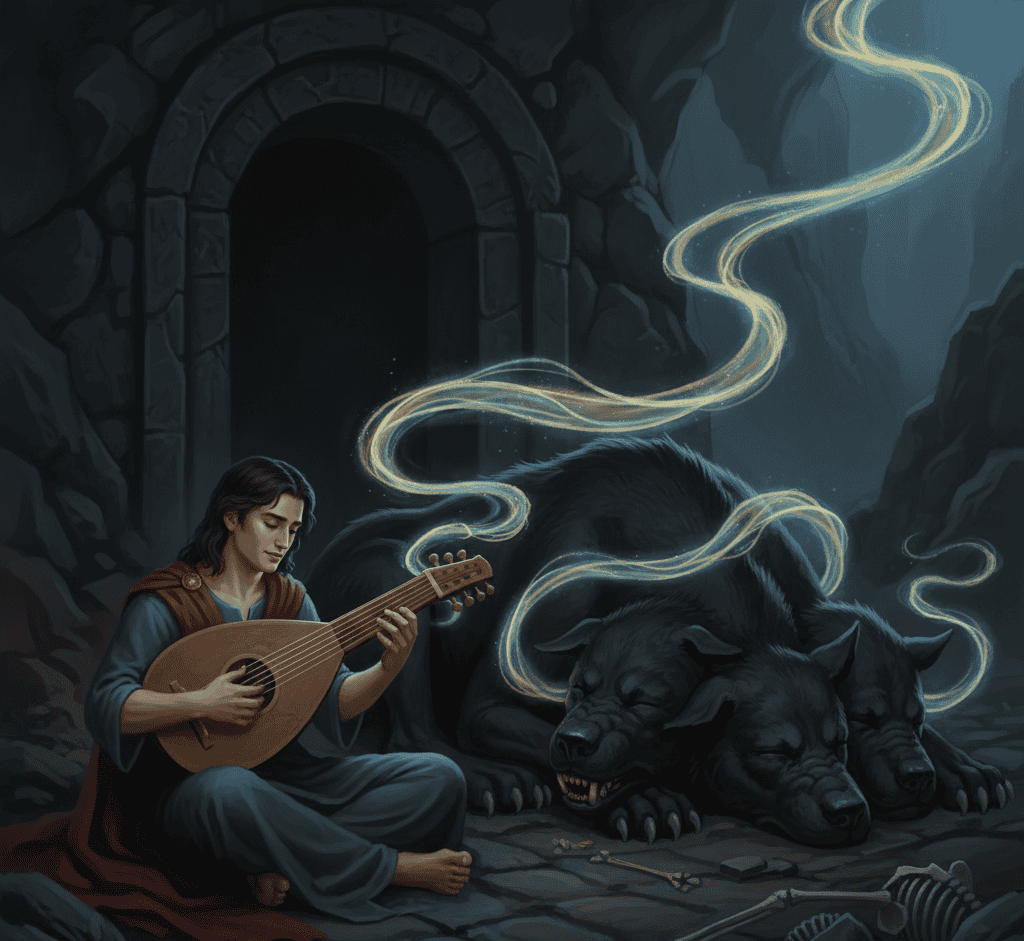In the shadowy world beneath the earth, where mortal souls journey after death, stands a guardian unlike any other.
Cerberus, the monstrous three-headed dog of Greek mythology, is both feared and respected.
He is the eternal warden of the Underworld, loyal only to Hades, and his very presence marks the line between life and death.
To most, he’s just a beast of nightmares, but to the ancients, he was something more, a necessary protector in a world where balance depended on fear.
The Monster That Was Born to Guard the Dead
Cerberus wasn’t always part of the Underworld. His story begins in the shadows of Greek creation myths, where monsters were as real as gods.
He was born to two terrifying parents, Echidna, a half-woman, half-serpent creature, and Typhon, a storm-born giant said to rival Zeus himself.
From such a union, nothing gentle could emerge. Cerberus entered the world snarling, with three heads, a serpent’s tail, and a mane of writhing snakes.
Some ancient poets claimed he had fifty heads, others said a hundred, but the Greeks eventually settled on three.
The three heads weren’t just for show. Many believed they represented the three stages of existence – birth, life, and death.
Others saw them as reminders that the dead could not escape, no matter which path they took. Each head was said to see the world differently.
One always watched the living, another guarded the realm of the dead, and the third stared into the future. Together, they formed a single creature that could never be deceived.
From the moment Hades claimed him, Cerberus stood at the gates of the Underworld, ensuring that no living soul entered without permission and no dead soul ever returned to the world above.
While Hades ruled from his dark throne, it was Cerberus who maintained the boundary.
His growls were the last sound mortals heard before vanishing forever into the realm of shadows.
The Heroes Who Tried to Outsmart Him
No creature, no matter how terrifying, escaped the attention of Greek heroes, and Cerberus was no exception.
To conquer him was to prove oneself capable of facing death itself. Among the mortals who dared, none was more famous than Heracles.
As the final trial in his Twelve Labors, Heracles was ordered to capture Cerberus alive and bring him to the surface.
To do this, he had to descend into Hades, a journey no mortal was meant to survive. When he reached the dark gates, he didn’t draw his sword.
Instead, he asked permission. Hades, amused by the hero’s courage, agreed on one condition: Heracles could take Cerberus, but only if he used no weapons.
What followed was a battle unlike any other. Heracles wrestled the beast with his bare hands, enduring the bites of three sets of jaws and the lash of a venomous tail.
The struggle shook the Underworld until, at last, Cerberus yielded. Heracles dragged him into the world of the living, where people fled in terror at the sight of the monstrous guardian.
When the task was complete, the hero returned Cerberus to Hades, and the gates closed once more.
Others were not so respectful. Orpheus, desperate to bring back his wife Eurydice, lulled Cerberus to sleep with the sound of his lyre, sneaking past the sleeping beast.
Aeneas, the Trojan hero, used a drugged honey cake to distract him. Even Psyche, the mortal woman who became a goddess, bribed Cerberus with a small piece of bread.
Despite his ferocity, he was not impossible to trick. That’s proof that even the mightiest guardians can be undone by gentleness, music, or cleverness.
The Symbolism of the Gatekeeper
In myths, Cerberus wasn’t merely a monster. He was a symbol of the natural order, life and death kept in their rightful places.
To the ancient Greeks, death was not evil, but it was sacred. Letting the dead wander the earth or the living trespass in Hades would throw everything into chaos.
Cerberus embodied the fear and respect humans owed to that boundary. His three heads reflected more than just stages of existence.
Some philosophers saw them as representing the three human instincts – desire, anger, and reason.
To face Cerberus was to face one’s own nature. In this way, Heracles’ victory wasn’t just physical; it was spiritual.
He didn’t kill the beast; he mastered it, proving that strength must coexist with restraint.
Cerberus also appears on ancient pottery, guarding the black doorway of the Underworld. Sometimes, artists painted him smaller and almost dog-like, more loyal than monstrous.
This version reflected another truth: Cerberus wasn’t evil. He was loyal to his duty, bound by divine purpose.
His story reminds us that not all monsters are villains. Some exist to keep the balance, even when their role is feared or misunderstood.
When people told stories about Cerberus, they weren’t just talking about a mythological creature.
They were expressing the human need to understand death, to make peace with it by imagining it as something that could be guarded, contained, or faced.
The thought of a gatekeeper gave shape to the unknown. It turned fear into form, something the mind could picture instead of endlessly dread.
The Legacy of the Underworld’s Watchdog
Over time, Cerberus became one of mythology’s most enduring figures. His name appeared in Roman stories, medieval texts, and later, in art and literature across Europe.
Even today, his image survives. In fantasy novels, video games, and movies, Cerberus often appears as a guardian or final challenge.
The symbolism hasn’t changed much since ancient times. To pass Cerberus is to confront the unknown, to face fear without turning away.
Strangely, Cerberus has become less of a monster and more of a metaphor. He represents every barrier that stands between what we know and what we fear to explore.
He reminds us that not all doors are meant to be opened, and not every path should be crossed without respect.
Yet he also tells us that courage, compassion, and understanding can sometimes lead us safely past even the most terrifying guardians.
At the gates of Hades, he still stands, patient and unyielding. His three heads move slowly, watching the worlds of life, death, and what lies beyond.
It’s a simple truth wrapped in myth: some boundaries exist for a reason. And as long as there are stories of the underworld, Cerberus will never leave his post.
The world above may have forgotten the old gods, but in every tale of courage, every warning about curiosity, and every whisper about forbidden places, the spirit of the three-headed guardian still growls softly in the dark.

自出生以来,我一直感觉到自己与神灵有着紧密的联系。作为一名作家和导师,我的使命是帮助他人在最黑暗的时刻找到爱、幸福和内心的力量。





